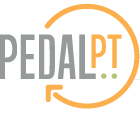
Neck and upper back pain is one of the most common pains a cyclist will experience, especially when riding longer distances, starting off on a new bike, or with prolonged climbs.
These symptoms include:
Although there are many factors related to neck pain, one of the most common reasons for these symptoms is related to being too stretched out, i.e. reaching too far to your handlebars. Bike shops and industry-based bike fitters will be quick to sell you new bars or a shorter stem, but you very well might NOT need new equipment to alleviate your pains – read on!
Self check (road bike): When assessing your reach, sit on your saddle, and position your hands on the brake hoods– this part is key, as most of us think of our reach as related to the drops vs the tops of the bar. For the sake of assessment here, get your hands on the hoods; theoretically we should be in this position for roughly 70-80% of the time riding, and for quick access to the brakes and (index) shifting.
In this position, the goal is to have your shoulder angle (the imaginary angle between your trunk and your arms) at, or slightly less than 90deg (see Fig A); essentially a right angle between your trunk and your shoulders when riding, and with a slight bend in the elbows. And yes, this angle is affected by your stem length/height, handlebars, saddle position, the brake hoods/shifters position. However the most common neglected component to your reach is your posture on the bike!
As a general rule, anytime the shoulder angle exceeds 90deg, the likelihood of upper back and neck symptoms skyrockets due to to the additional stress and torque placed on these tissues in this position.
Not necessarily! Before you run to your nearest bike shop and buy a new stem, (typically to make up the 0.5 to 1.0cm difference), please consider some other highly effective options first to resolve those symptoms and improve your cycling posture:
1) Consider saddle height– An all too common scenario is someone who’s saddle is too high, which leads to a greater reach. This can happen because of the angle of your seat tube: as you raise the saddle, the distance between the handlebars and saddle increases. Conversely, by lowering your saddle, you can oftentimes decrease your reach enough to make up that .5 to 1cm reach differential. Try it: Lower your saddle in 5mm increments, and re-check your shoulder angle, but also consider your cycling posture . . . so read on!
2) Check your posture– This is always a biggie, even in highly-trained, seasoned cyclists. A rounded lower back brings your weight backwards (and puts your lumbar spine in a vulnerable, flexed, weakened position), ultimately leading to greater reach. Correct it: rotate your pelvis forwards, and think of lifting “up” with your chest, with the aim of having a flattened lower back, and a more upright neck posture.
This postural influence is also commonly why neck pain comes on towards the second-half of your ride, or with challenging hill-climbs: As you fatigue, your spinal and core muscles get tired, and you end up ‘slouching’ on your bike, leading to a greater shoulder angle, and thus a greater chance of neck/back pain while riding.
Reach, saddle height and optimal posture/positioning, are all included in Pedal PT‘s comprehensive Bike Fitting service at our office- call us today for more information, and to help you ride more and hurt less!
Kevin Schmidt, MSPT, CMP, Cert. Bike PT is Owner/Founder of Pedal PT in Portland, Oregon.